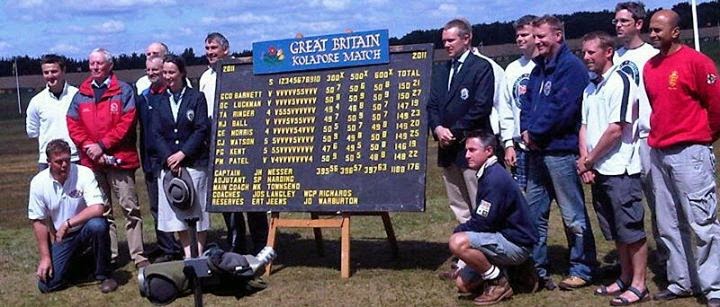It is probably fair to say that my first tour with the Great Britain Palma Rifle Team to the World Long Range Championships at Connaught Ranges in 2007 was not a roaring success. While I came an acceptable 39th in the individual WLRC, my position in the DCRA Grand Aggregate was miserable, I didn't make the Governor General's Final and I was first reserve in. Every. Single. Goddamned. Team. Match.*
The long and the short of it was that my usual technique had degenerated from an extremely consistent and barely-controlled flinch into an inconsistent mess of a flinch. On my return from this tour, I decided that I should probably do something about this. I knew that good trigger control was critical to achieving consistent results and yet I managed to lie to myself about this, kidding myself that it really wasn't that big a deal and my technique was fine.
Normally, I'm a strong believer in the non-existence of silver bullets; however in this case I really believe that this one weird trick eliminated my flinch in the space of about 25 shots. There are a couple of different variations on the theme but it all really boils down to firing a few dozen shots not knowing whether there's a live in the chamber or a dummy/snapcap/empty.
I had tried having someone else load for me with a snapcap, but with the Swing Mk. III I was using at the time I could hear the difference between a live round and a snapcap being loaded. To get around this I made myself ten dummy rounds, each of which was identical to my normal handloads except for a) having an already fired primer, and b) the large red handwriting indicating that this was a dummy round. Otherwise they were completely indistinguishable from a live round, to the point of containing the same charge of the same powder.**
The next time I went to the range, I dumped the dummy rounds into a cloth bag with 20 live rounds and then shot a couple of 2+10s without looking at the rounds as I loaded the rifle. At the start my technique was close to what was normal for me at the time; however I got the fright of my life the first time I pulled the trigger on a dummy round: my position was beautiful, centred perfectly on the vee with only a tiny wobble, but all hell broke loose when the trigger broke! The rifle waved all over the bloody shop before coming to rest neatly back in the middle despite the complete lack of recoil.
This was something of an eye opener.
My composure eventually regained, I continued to shoot and seemed to take a lot more time over triggering, and the next time a dummy came up the rifle wavered only a little. The third time, the rifle didn't move when the firing pin went *ping*. It looked very much like I had cured myself of my flinch. Certainly, the last time I had a misfire (sometime in 2014) the rifle did not waver in the tiniest degree when the trigger broke.
It is worth emphasising at this point that in general my muscle memory felt like I was triggering correctly, just very quickly; however it was clear from the results that this was wrong. But when I consciously tried to squeeze the trigger more slowly, I simply could not do so no matter how hard I tried.
There. You know the secret of my success, or at least how I eliminated one bad habit. If you have a flinch or even a suspicion that your trigger discipline could be better, try this one weird trick and let me know how you get on.
* NB - I freely accept that the team hierarchy made exactly the right decision and that this was fundamentally my fault for not shooting well enough. Own your own performance biatches.
** If you are going to do this, please, please, please ensure that they are stored separately from real ammunition (but still under lock and key, as they may technically consistute a live round under UK law) and are clearly labelled as dummy rounds which contain real powder. Alternatively, use the same mass of an inert filler such as semolina.

Good point Gaz. My trigger manipulation is awful so maybe in this late stage of life I should try your method. John
ReplyDeleteHi John, age should never be a barrier to improving your shooting! Give it a go and let me know how you get on.
DeleteEnjoyed this article, keep them coming!
ReplyDeleteThanks Bruce, I'll try!
DeleteI do this when I teach folks pistol. Works a treat. I worked on my flinch this summer by doing Scatt (followthrough) and then shooting my 6.5x47 with a light bullet (muzzle hardly left the target). Really helped.
ReplyDelete